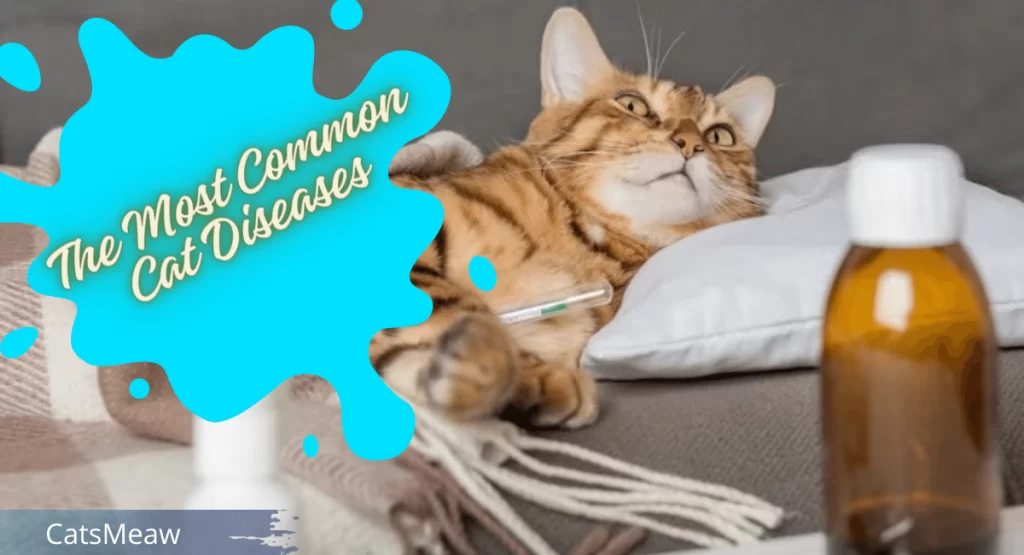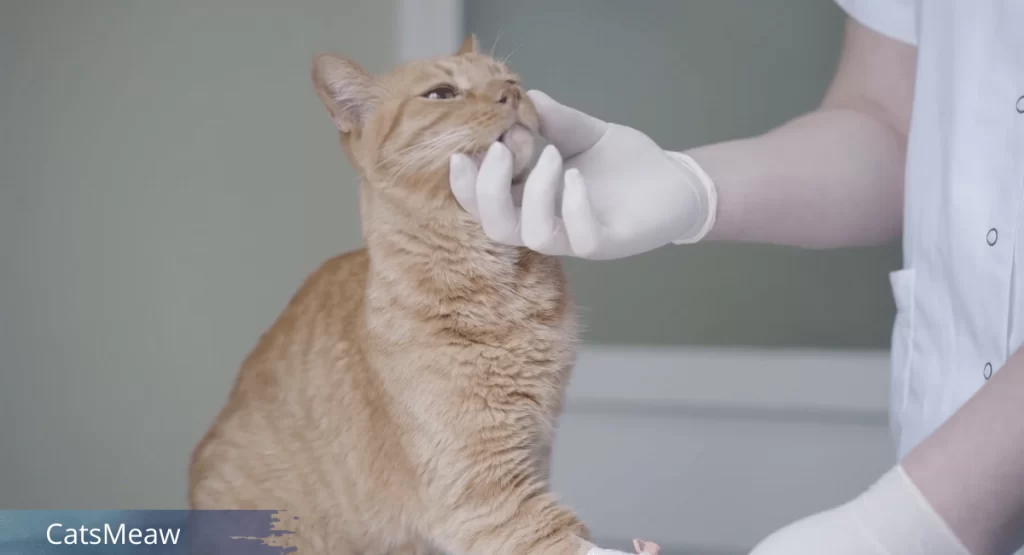As a pet owner, it is essential to be aware of the most common cat diseases that can affect your feline companion. By knowing the symptoms and understanding the effective treatments available, you can ensure your cat’s well-being and provide proper care when needed. Early detection and treatment play a vital role in managing these diseases, so let’s explore some of the most prevalent ones.

Table of Contents
Importance of Early Detection and Treatment
Cats, like humans, can suffer from various health issues. However, they are often experts at hiding their discomfort, making it challenging to recognize when they are unwell. Regular veterinary check-ups are crucial for early detection of diseases. Timely diagnosis allows for prompt treatment, improving the chances of a successful recovery. It is important not to ignore any changes in your cat’s behavior, appetite, or litter box habits. By paying attention to these subtle signs, you can catch potential problems early on and provide the necessary care.
Feline Upper Respiratory Infections
Feline upper respiratory infections are highly contagious and commonly affect cats that live in close quarters, such as shelters or multi-cat households. it is one of the most common cat diseases. These infections are usually caused by a combination of viruses and bacteria. The symptoms may include sneezing, nasal discharge, coughing, fever, and loss of appetite. In severe cases, ulcers can develop on the tongue and eyes may become inflamed. Treatment typically involves supportive care, such as providing fluids and antibiotics to combat secondary bacterial infections. In some cases, antiviral medications may also be prescribed.
Feline Lower Urinary Tract Disease
Feline lower urinary tract disease (FLUTD) is a collective term for various conditions affecting the bladder and urethra of cats. Symptoms of FLUTD include frequent urination, difficulty urinating, blood in the urine, and urinating outside the litter box. This also a one of common cat diseases that can be caused by several factors, including bladder stones, urinary tract infections, and inflammation of the bladder lining. Treatment options for FLUTD depend on the underlying cause but may involve medication to relieve pain and inflammation, dietary changes, and in some cases, surgery to remove bladder stones.
Feline Leukaemia Virus
Feline leukemia virus (FeLV) is a contagious and potentially life-threatening disease that can weaken a cat’s immune system, making them more susceptible to other infections and diseases. FeLV is transmitted through close contact with an infected cat, such as sharing food bowls or grooming.
Our pick: The Best Cat Health Supplies
Symptoms may include weight loss, poor appetite, lethargy, pale gums, and recurrent infections. Unfortunately, there is no cure for FeLV, but supportive care can help manage symptoms and improve the cat’s quality of life. Preventive measures, such as keeping infected cats isolated and vaccinating against FeLV, are essential to protect your feline companions.
Feline Immunodeficiency Virus
Feline immunodeficiency virus (FIV) is another viral infection that weakens a cat’s immune system. It is primarily transmitted through deep bite wounds inflicted during fights between cats. Symptoms of FIV can vary widely but may include weight loss, fever, swollen lymph nodes, dental problems, and recurrent infections.
Related: Best Interactive Toys for Indoor Cats
While there is no cure for FIV, supportive care and management of secondary infections can help maintain the cat’s health. Preventive measures, such as keeping cats indoors and avoiding fights with other cats, are crucial in preventing the spread of FIV.

Feline Infectious Peritonitis
Feline infectious peritonitis (FIP) is a viral disease caused by a coronavirus. It can be challenging to diagnose and treat as it mimics other conditions and can affect various organs in the body. Symptoms of FIP can include weight loss, fever, lethargy, fluid accumulation in the abdomen or chest, and eye abnormalities. Unfortunately, there is no cure for FIP, and treatment focuses on managing symptoms and improving the cat’s comfort. Prevention involves minimizing exposure to the coronavirus by keeping cats in a clean and stress-free environment.
Feline Diabetes
Feline diabetes is a metabolic disorder characterized by high blood sugar levels. It is more common in overweight or obese cats and may develop due to genetic factors or an unhealthy diet. Symptoms of feline diabetes include increased thirst, frequent urination, weight loss, and changes in appetite. Treatment for feline diabetes involves cat insulin therapy, dietary changes, and weight management. Regular monitoring of blood sugar levels is essential to ensure proper management of the disease and prevent complications.
Feline Panleukopenia
Feline panleukopenia, also known as feline distemper, is a highly contagious viral disease. It primarily affects kittens and unvaccinated cats. Symptoms of feline panleukopenia include fever, loss of appetite, vomiting, diarrhea, and dehydration. Treatment involves supportive care, including fluid therapy, anti-nausea medication, and antibiotics to prevent secondary infections. Vaccination is the best preventive measure against feline panleukopenia, ensuring your cat’s immune system is prepared to fight off the virus.
Feline Heartworm Disease
While commonly associated with dogs, heartworm disease can also be one of the common cat diseases that affects cats. It is transmitted through mosquito bites and can lead to severe respiratory and cardiovascular issues. Symptoms of feline heartworm disease can include coughing, difficulty breathing, lethargy, weight loss, and vomiting. Unfortunately, there is no cure for heartworm disease in cats, and treatment focuses on managing symptoms and preventing further infection. Preventive measures, such as using mosquito repellents and keeping cats indoors during peak mosquito activity, are essential in protecting your cat from this potentially fatal disease.
Effective Treatments for Common Cat Diseases
The treatment options for common cat diseases vary depending on the specific disease and its severity. In many cases, supportive care, including medication, dietary changes, and fluid therapy, can greatly improve a cat’s condition and help them recover. It is crucial to work closely with your veterinarian to develop a tailored treatment plan for your cat. Regular follow-up visits and monitoring are essential to ensure the effectiveness of the chosen treatment and make any necessary adjustments.
Preventive Measures for Cat Diseases
Prevention is always better than cure when it comes to cat diseases. Vaccinations play a crucial role in protecting your cat against many common diseases, such as feline panleukopenia, FeLV, and FIV. Keeping your cat indoors can also minimize their exposure to infectious agents and reduce the risk of fights and injuries.
Related: Best Guide for Choosing the Perfect Cat Backpack
Providing a balanced diet, regular exercise, and maintaining a clean and stress-free environment can help boost your cat’s immune system and overall health, reducing the likelihood of developing diseases.
Conclusion
Being aware of the most common cat diseases, their symptoms, and effective treatments is vital for every cat owner. By understanding the importance of early detection, seeking veterinary care promptly, and implementing preventive measures, you can ensure the well-being of your feline companion. Remember to schedule regular check-ups with your veterinarian, maintain a healthy diet and lifestyle for your cat, and provide a safe and nurturing environment. By doing so, you can help your cat live a long, happy, and disease-free life.
